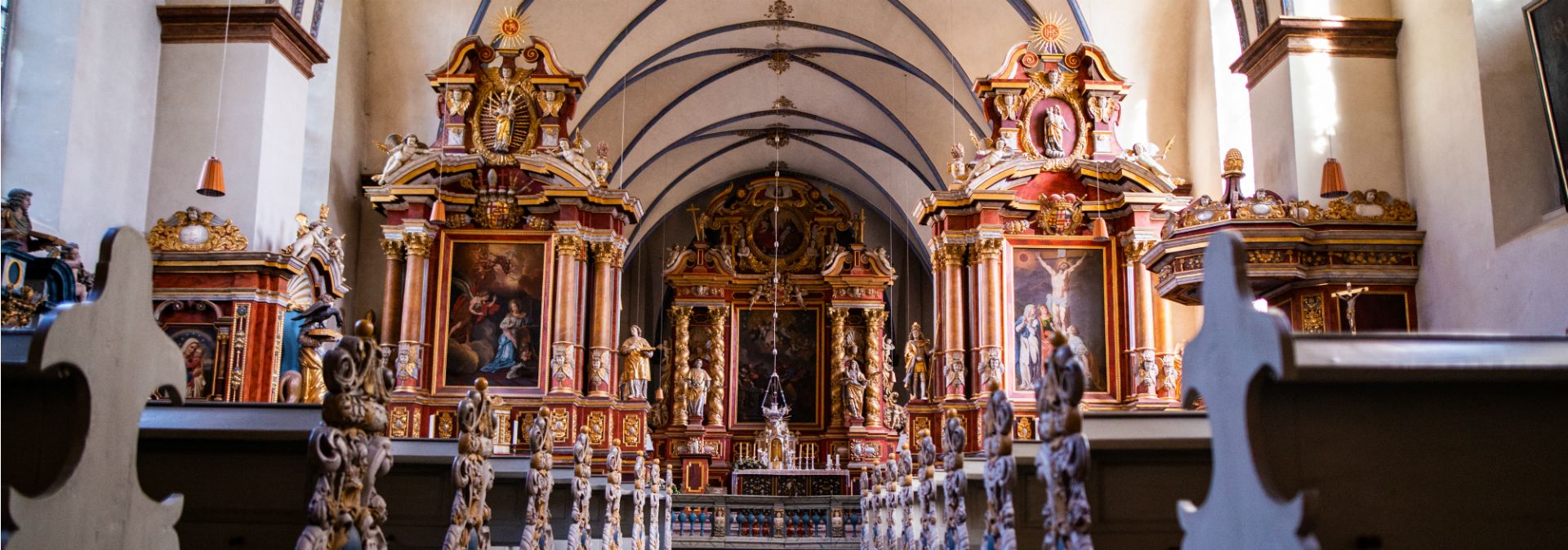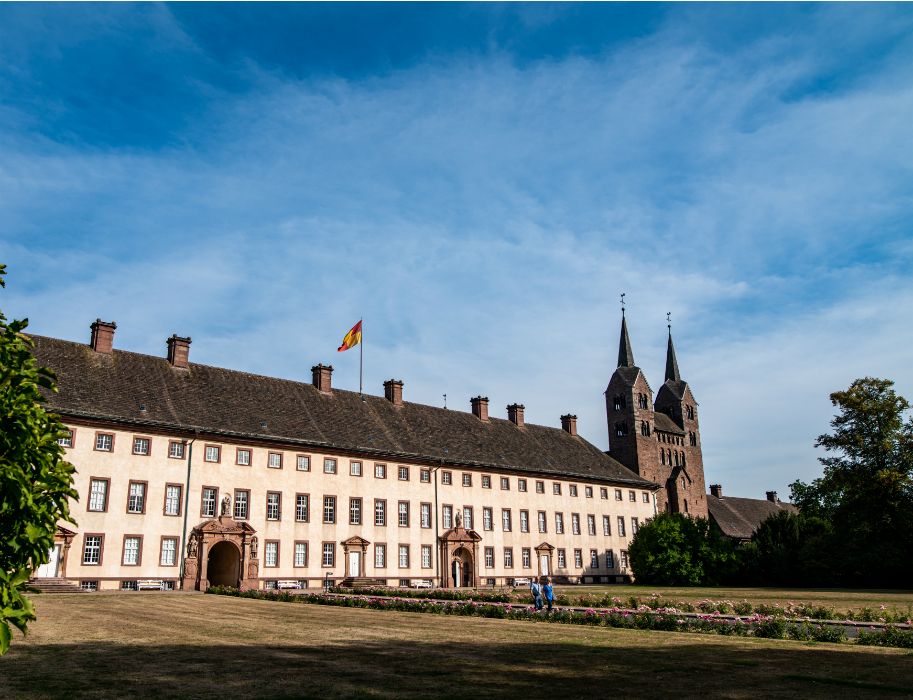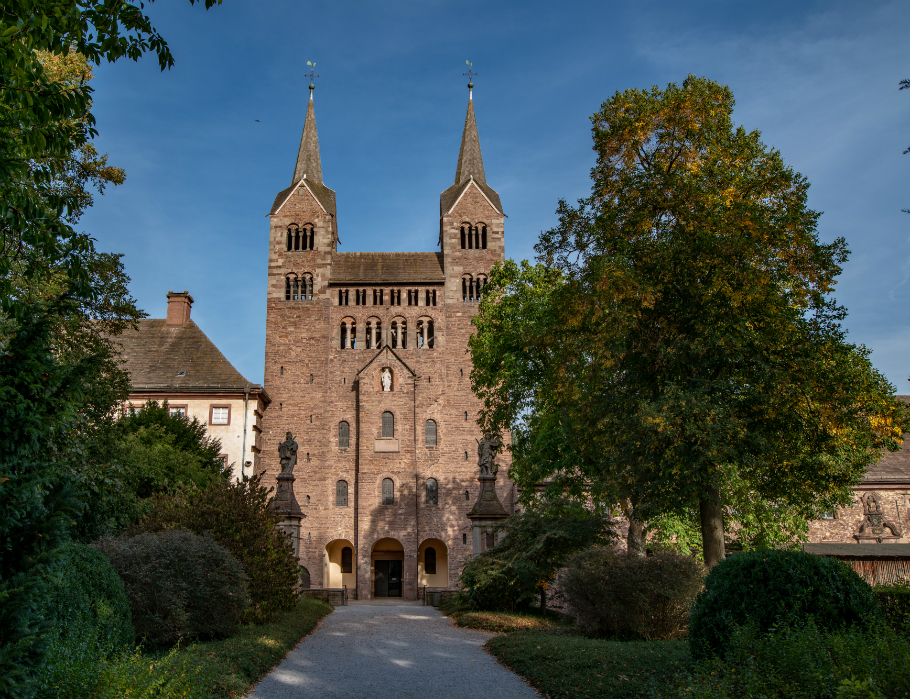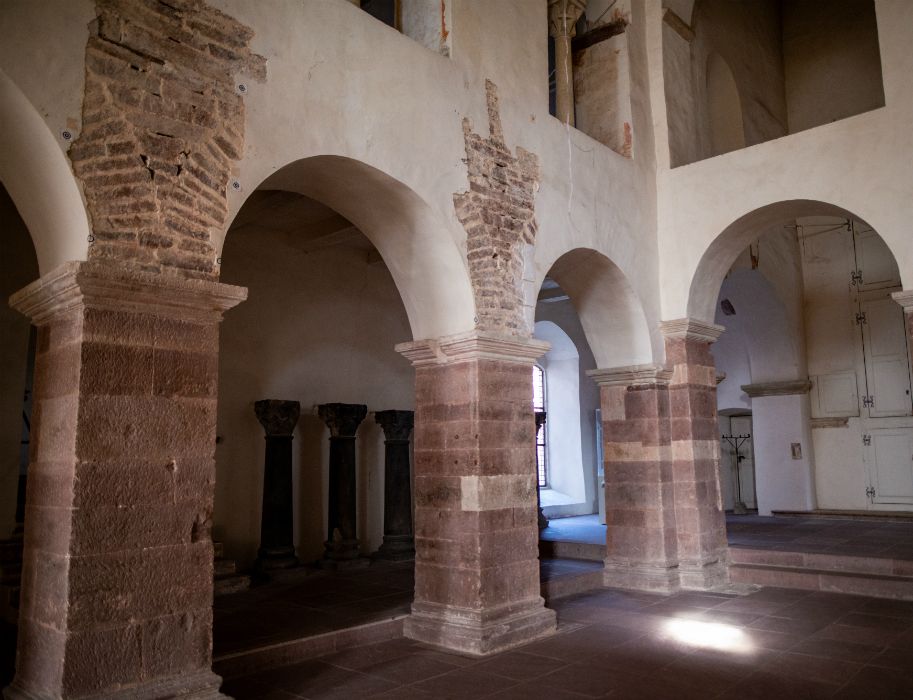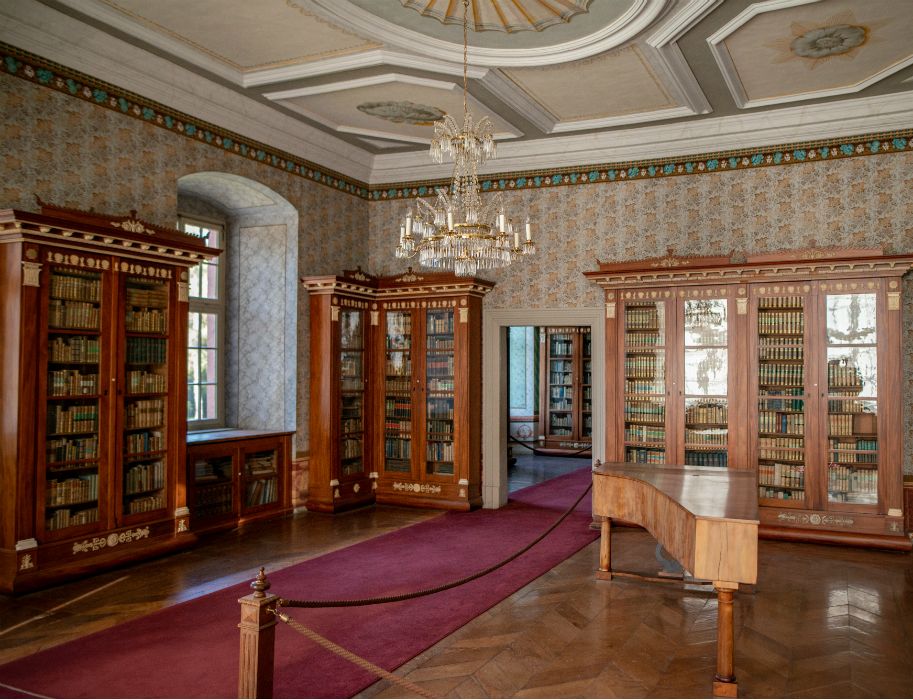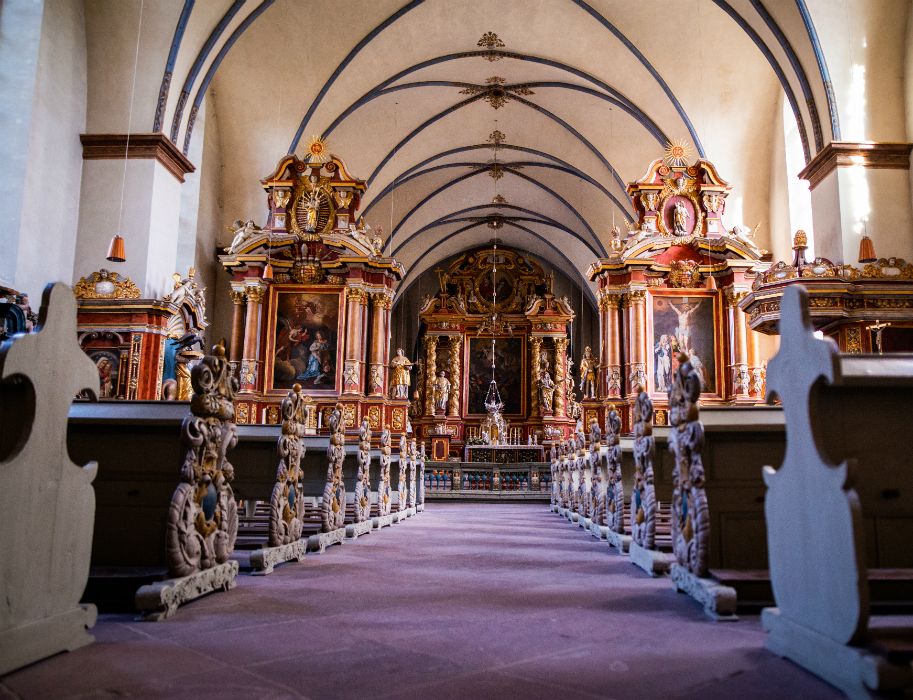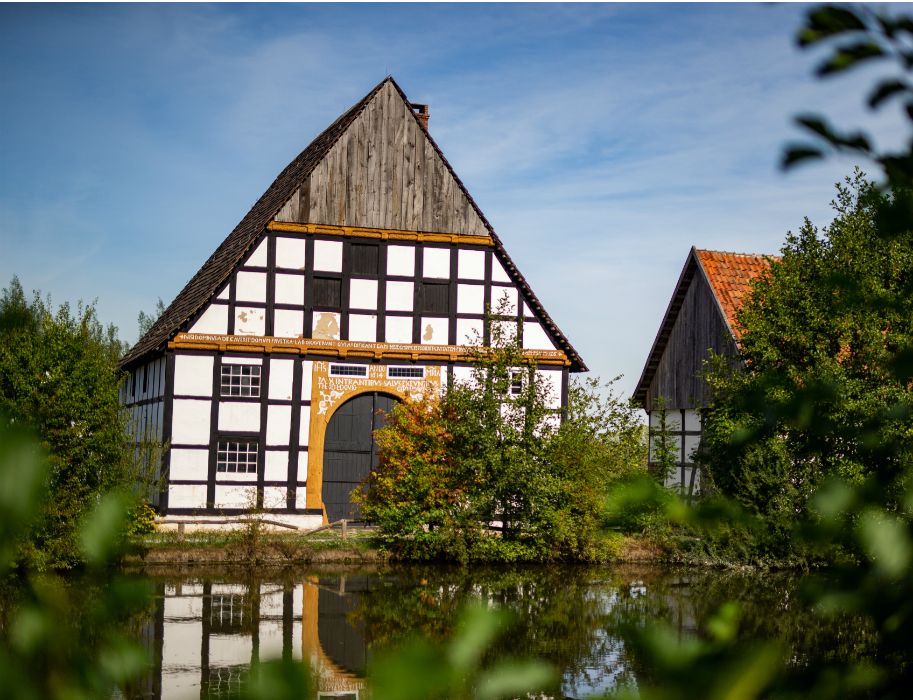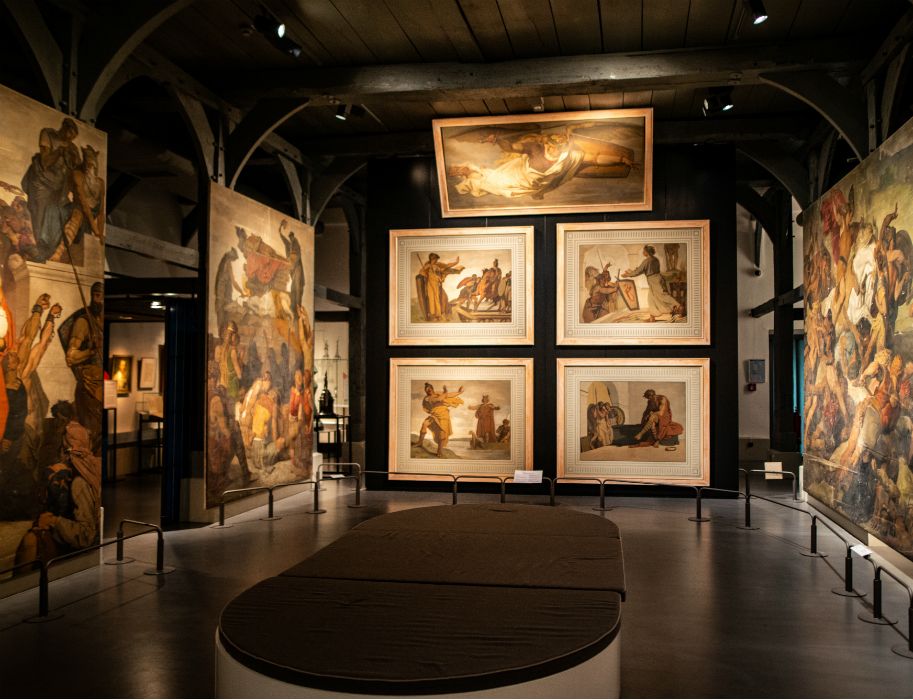The former Benedictine abbey at Corvey is unique: its westwork, or western façade, is not just one of the only nearly fully-preserved Carolingian structures, it is the only Carolingian westwork to survive at all. Because of this, the former monastery and convent of the same name were awarded the coveted UNESCO World Heritage title in 2014, providing the city with its first UNESCO World Heritage Site.
Imposing westworks like those in Corvey once had a very particular task to perform. Most were attached to the churches of the Imperial monasteries, where kings and emperors would stay when travelling. Only rulers and their court were permitted to use them. From one gallery, which opened onto the church, the king or emperor could participate in the worship from an elevated position.
The Corvey westwork is not only unique because of its age, but also because of its magnificent mural, though only fragments have been preserved today. It depicts scenes from the Odyssey, thereby proving that religious buildings in that era took inspiration from images from antiquity.
Corvey as an important missionary centre
But it is not only Corvey’s art and cultural history that lend it such outstanding importance: its construction dates back to the Emperor Charlemagne. He had defeated the pagan Saxons in the region and wanted to use the construction of the new monastery to show them the superiority of Christianity. Within a short time the abbey became the spiritual, economic, political and cultural hub of the area. From here monks spread the Christian faith across northern Europe.
The monastery was dissolved in the early 19th century and a short time later passed into the hands of the Dukes of Ratibor and the Prince of Corvey. Together with the parish, the family is still responsible for Corvey.
One of Corvey’s most famous residents was August Heinrich Hoffmann von Fallersleben. The author of the German national anthem was working here as the Duke’s librarian and was buried in the adjacent cemetery upon his death. His grave can still be seen today. Schloss Corvey itself now houses a museum, a restaurant and an activity hotel.
